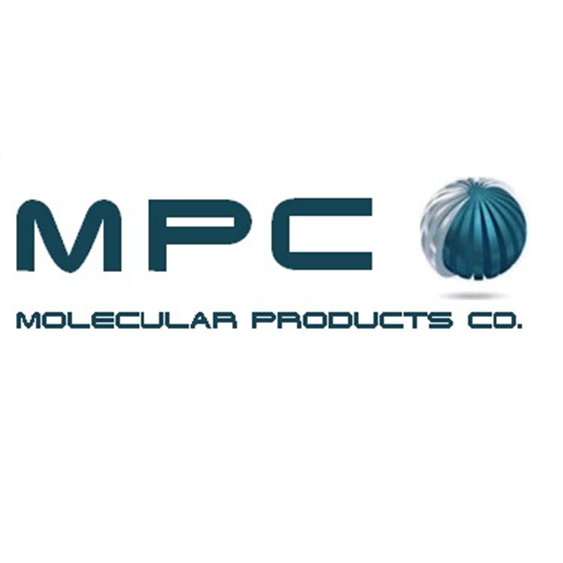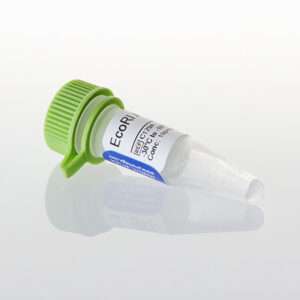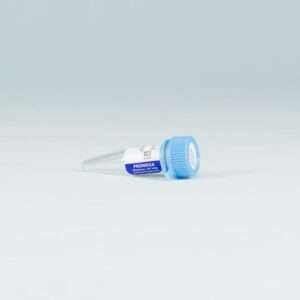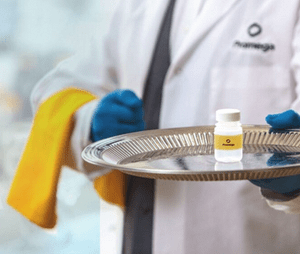Description
Size:
2,500 units : Catalog number selected: N2111
10,000 units: Catalog number selected: N2115
Size:
2,500 units : Catalog number selected: N2511
10,000 units: Catalog number selected: N2515
Size:
2,500 units : Catalog number selected: N2611
10,000 units: Catalog number selected: N2615
RNasin®: The Most Trusted Name in RNase Inhibition
Promega RNasin® Ribonuclease Inhibitors are the gold standard for RNase protection. RNasin inhibitors feature in many publications and are the most widely used protection against RNases worldwide. Use RNasin® Ribonuclease Inhibitors for RNA isolation, RT-PCR, in vitro transcription or any situation where RNase contamination is a concern.
We offer Native and Recombinant forms of RNasin® Inhibitor, as well as RNasin® Plus—an enhanced formulation offering increased resistance to oxidation and stability up to 70°C.

RNasin® Ribonuclease Inhibitor
- Inhibits RNase A, B and C as well as human placental RNase.
- Does not inhibit other RNases and modifying enzymes like reverse transcriptases.
- Results in higher yield in RNA extractions and better performance in RT-PCR, cDNA synthesis, microarrays and in vitro transcription/translation.
RNase Contamination Happens, Even When You Are Careful
RNases are ubiquitous and can cause RNA degradation and compromise RNA integrity. RNase contamination can happen during RNA purification and during routine downstream handling. RNasin® Ribonuclease Inhibitors inhibit RNase A family and human placental RNases by noncovalently binding to RNases.


In this experiment, nine buffer and water stock solutions from an RNA-free zone of an academic lab were tested for RNases. The samples were in use for 1-14 months. Thirty-five microliters of each sample was collected, split and mixed with 5 µg of RNA and RNase ONE™ 10X buffer. RNasin® Ribonuclease Inhibitor (40u) was added to one of the two samples, and both were incubated overnight at 37 °C. Lane 1, marker; lane 2, RNA control; lanes 3–11, samples from the laboratory.
Of the nine samples tested, seven showed varying degrees of RNase contamination. For all samples tested, the RNA remained intact during the overnight incubation at 37°C when Recombinant RNasin® Ribonuclease Inhibitor was added. Details of this experiment can be found in this technical article.
Not all RNase Inhibitors are Equal
Some RNase inhibitors offer less than half the protection of Promega RNasin® Inhibitor.
Here, we compare RNasin® Ribonuclease Inhibitor and RNaseOUT™ for inhibition of RNase A during RT-qPCR. RNA was reverse transcribed and amplified in the presence of RNase A and either Promega RNasin® or RNaseOUT™. RNasin® Inhibitor provided better RNA protection in the presence of RNase, as shown by higher levels of mRNA.

Tips for Maintaining an RNase-Free Environment
Establish an “RNA Only Work Zone” in your lab that has dedicated equipment, reagents, labware, etc. Use these tips to help you avoid RNase contamination.
- Wear gloves and use sterile technique when handling RNA or reagents that will be used with RNA.
- The most common sources of RNase contamination are hands and bacteria or mold that could be lurking on dust particles or on glassware.
- Use sterile, disposable plasticware.
- These products are typically RNase-free and don’t require treatment to inactivate RNases.
- Treat non-disposable glassware and plasticware before you use it. For glassware, bake it at 250°C overnight.
- For plasticware, rinse it with 0.1N NaOH/1mM EDTA and then with diethyl pyrocarbonate (DEPC)-treated water.
- Reserve a set of chemicals and solutions needed for RNA isolation and analysis as “RNA Only” and keep them separate from reagents for other applications.
- Wear gloves whenever you handle these reagents, and use sterile labware to measure them.
- Beware! Autoclaving alone is not sufficient to inactivate all RNases.
- Solutions that you prepare in the lab should be treated by adding DEPC to 0.05% and incubated overnight. Autoclaving the treated solutions for 30 minutes will remove any trace of the DEPC from the solution.
- Use RNasin® Ribonuclease Inhibitor to help prevent RNA degradation.
Source, Unit Definition, QC and Storage Buffer
Source
Recombinant and RNasin® Plus: Recombinant E. coli (Cat.# N2511, N2515, N2611, N2615).
Native: Human placenta (Cat.# N2111, N2115).
Unit Definition
One unit is defined as the amount of RNasin® Ribonuclease Inhibitor required to inhibit the activity of 5ng of ribonuclease A by 50%. Activity is measured by the inhibition of hydrolysis of cytidine 2,3´-cyclic monophosphate by ribonuclease A.
Storage Buffer
20mM HEPES-KOH (pH 7.6 at 4°C), 50mM KCl, 8mM DTT and 50% (v/v) glycerol.
QC Assays
SDS-PAGE/purity, DNase, RNase, latent RNase, endonuclease.
What’s in the box?
| Item/ size 2,500 units : Catalog number selected: N2111 | Part # | Size | Concentration |
| RNasin® Ribonuclease Inhibitor | N211A | 1 × 2,500u | 40u/μl |
| Item/ size 10,000 units: Catalog number selected: N2115 | Part # | Size | Concentration |
| RNasin® Ribonuclease Inhibitor | N211B | 1 × 10,000u | 40u/μl |
SDS For N2111
Download SDS
SDS For N2115
Download SDS
Use Restrictions
For Research Use Only. Not for Use in Diagnostic Procedures.
Storage Conditions

What’s in the box?
| Item/ size 2,500 units : Catalog number selected: N2511 | Part # | Size | Concentration |
| Recombinant RNasin® Ribonuclease Inhibitor | N251A | 1 × 2,500u | 40u/μl |
| Item/ size 10,000 units: Catalog number selected: N2515 | Part # | Size | Concentration |
| Recombinant RNasin® Ribonuclease Inhibitor | N251B | 1 × 10,000u | 40u/μl |
SDS For N2511
Download SDS
SDS For N2515
Download SDS
Use Restrictions
For Laboratory Use. Outside of the United States, this product is intended for research use only unless otherwise stated.
Storage Conditions

What’s in the box?
| Item/ size 2,500 units : Catalog number selected: N2611 | Part # | Size | Concentration |
| RNasin® Plus RNase Inhibitor | N261A | 1 × 2,500u | 40u/μl |
| Item/ size 10,000 units: Catalog number selected: N2615 | Part # | Size | Concentration |
| RNasin® Plus RNase Inhibitor | N261B | 1 × 10,000u | 40u/μl |
SDS For N2611
Download SDS
SDS For N2615
Download SDS
Use Restrictions
For Laboratory Use. Outside of the United States, this product is intended for research use only unless otherwise stated.
Storage Conditions









